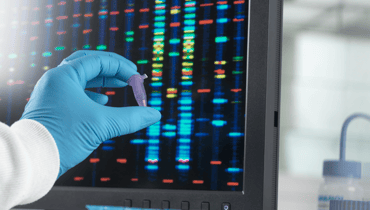
Most lung nodules are harmless and not cancerous. But how do you know if yours is going to remain noncancerous? It’s natural to be concerned about this. Understanding more about them can ease your mind. Let's look at what you need to know if a chest scan shows you have a lung nodule.
What are Lung Nodules and What Causes Them?
A pulmonary or lung nodule is a mass of abnormal cells that develops in the lung. They are very common. In fact, lung nodules show up in around half of patients who receive an X-ray or CT scan. Thankfully, 95% of nodules are benign, which means cancer is not present. The most common cause of is a previous infection that has left scar tissue in the lung.
There are other reasons you might develop lung nodules besides infections. For example, long-term exposure to air irritants and autoimmune diseases, such as sarcoidosis and rheumatoid arthritis, can also cause lung nodules to form.
Over time, cells in the lung become calcified or hardened, making them more visible on chest images such as an X-ray performed for another medical condition. Sometimes referred to as a "shadow," these nodules appear as a white spot on an X-ray. The number and size of the nodules can vary. Nodules typically range from 3mm – about the size of a grain of rice – to 25mm in diameter – which is almost an inch. The average size is about 10mm or less which is about the size of a pea. Smaller nodules are less likely to be cancerous than larger nodules.
Benign nodules tend to be small, smooth, and solid. Cancerous nodules, on the other hand, are larger, bumpy, and not completely solid.
If you were diagnosed with larger lung nodules, your doctor may recommend a biopsy, such as a bronchoscopy or a CT scan-guided biopsy. These tests allow doctors to remove tissue from the nodule and analyze it in a lab. The biopsy will help determine if cancer is present.
Risk Factors for Developing Lung Nodules
Those who smoke or have an extensive history of smoking are at a higher risk of developing lung nodules because tobacco smoke is a known lung irritant. Lung cancer screening may be available. To be eligible for lung cancer screening, you must meet all three of the following criteria:
- You should be 50-80 years of age, AND
- You must have a “20-pack-year” smoking history, AND
- You currently smoke or have quit within the last 15 years
According to the CDC, a “pack-year” is equivalent to smoking one pack of cigarettes per day for a year. Based on this, 10 pack years could be from smoking one pack a day for 10 years or two packs a day for five years.
In addition, people exposed to second-hand smoke have a 20-30% higher risk of developing lung nodules. Other risk factors for developing lung nodules include exposure to radon (an odorless, radioactive gas) and having a suppressed immune system. Screening, however, is not typically available for these people. They’re most likely to have a lung nodule found if they were scanned for another medical condition that includes images of the lungs.
If you are a smoker, quitting smoking is the best way to lower your risk of developing lung nodules and lung cancer. If you don’t smoke, try to avoid exposure to chemical irritants, second-hand smoke and radon gas.
What Should I Do if I Experience Symptoms from the Lung Nodule?
If your nodules are small and benign, your doctor will most likely not recommend immediate action. They may never need to be treated as long as they don’t interfere with your breathing. However, if your nodules are causing symptoms, you should inform your doctor. This includes:
- A cough that won’t go away
- Blood in mucus that you cough up
- Shortness of breath
- Wheezing
Experiencing symptoms does not always mean your nodule is cancerous. However, you need to have it tested. The sooner treatment can begin if the nodules are cancerous the easier they are to treat successfully.
Even if your doctor told you previously that the nodule is not cancerous you should report any symptoms. In some cases, non-cancerous nodules grow and partially block your ability to breath correctly. A procedure can be performed to remove it.
If the Lung Nodule is Cancerous, What’s Next?
A biopsy determines whether your lung nodule is cancerous. If it is, you will need to be treated by an oncologist. A medical oncologist who specializes in lung cancer is the best place to start, even before surgery, to determine the treatment options and the other they should be given, including the timing of surgery.
The prognosis for lung cancer is very positive if it is detected early. This means there is a high chance of successful treatment. Don’t wait to talk with a doctor if you’re experiencing symptoms.
Expert Lung Cancer Care at New York Oncology and Hematology
If you have a lung nodule that’s not cancerous, talk with your doctor about any follow up tests and report any symptoms that you may notice.
If you or a loved one received a lung cancer diagnosis after testing a lung nodule, schedule a consultation with one of the lung cancer specialists in the Capital District. Our team will discuss what comes next, including additional imaging to see if the cancer has spread and testing the lymph nodes to see if the cancer has moved there. From there, a personalized treatment plan is created specifically for the type of lung cancer and the stage. We can also provide a second opinion regarding your diagnosis and recommended lung cancer treatment.
We are located throughout the Capital District in Albany, Amsterdam, Hudson, Troy, and Clifton Park, New York, making it easier for you to receive the treatment you need close to your home.

